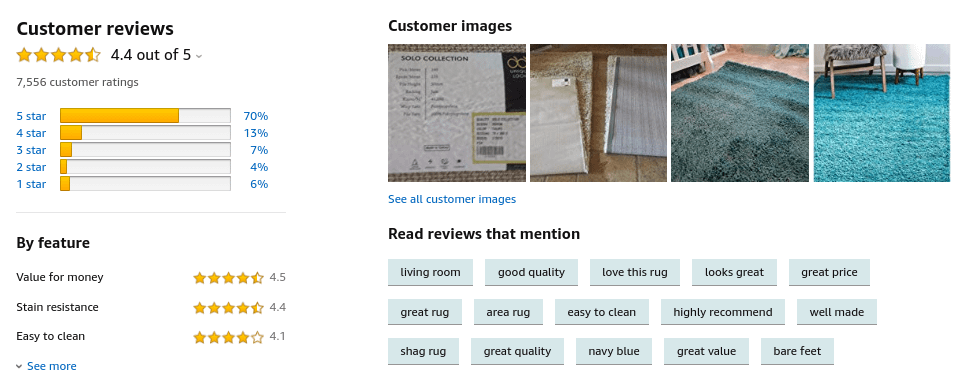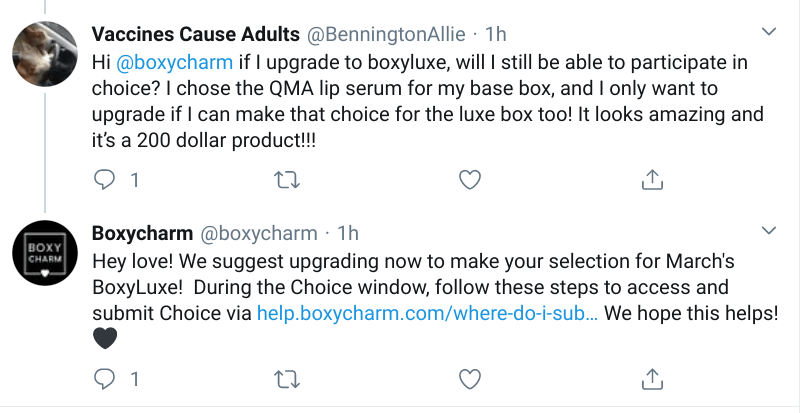Your social media branding plays a major role in consumers’ perception of your company. More specifically, whether they perceive you as trustworthy enough to purchase from. Unfortunately, trust doesn’t happen overnight. It must be earned gradually.
Fortunately, this is easier than you might think. With the right strategy, you can leverage social media to not only build trust with your audience, but boost engagement, and drive conversions as well.
In this post, we’ll discuss the importance of establishing customer trust and the role social media branding plays in it. Then we’ll provide you with four tips for effectively building trust online. Let’s get started!
How customer trust influences your business
In today’s digital world of constant connectivity, consumers are more informed and ‘in control’ than ever. They can buy just about anything online and from their vendor of choice. They can also quickly research brands, products, and services to make educated buying decisions.
For you, this means heightened competition. However, in addition to competing for the attention of customers, you’re also up against increasing consumer cynicism.
A 2019 Edelman Trust Barometer Special Report found that there are a handful of factors contributing to peoples’ growing need to trust the brands they buy from. This includes skepticism about the product (62 percent) and customer experience (55 percent) as well as the impact a brand has on society (69 percent).
Some important factors that contribute to customer trust include:
- Business values and practices (Are you an ethical, reliable company?)
- Safety and security (Does your site seem secure enough to hand over personal and payment information?)
- Authenticity and transparency (Are you honest and forthcoming about your products and offerings?)
If your business or social media brand is perceived as trustworthy, customers are more likely to view you in a favorable light. More specifically, it increases the chances of them buying a product or service from you. In fact, 81 percent of consumers agree that brand trust is one of the most important factors when making purchasing decisions.
Why social media branding is important for establishing trust
Clearly, putting your best foot forward online is important, particularly for demonstrating your trustworthiness. One way to do this is through social media branding.
The power of social media for business is undeniable. An increasing number of consumers are using these networks for shopping-related purposes, whether this is to conduct research, buy a product, or something in between.
According to research:
- Social media lead conversion rates are 13 percent higher than the average conversion rates
- 72 percent of Instagram users have purchased a new product after seeing it on the app
- One-third of shoppers use social media to research brands and buy products
Done correctly, your social media branding can play a pivotal role in your marketing success. While there are many ways to leverage your branding to drive conversions and engagement, one of the most effective is by increasing customer trust.
How to build trust through social media branding (four key tips)
Now we’ve discussed why it’s important to make customer trust a priority and why social media is a good place for it, it’s time to dive into how to go about it. Let’s take a look at four strategies you can use for building trust through your social media branding.
1. Post authentic, quality content on a consistent basis
Imagine that you’re in the market for a new home. You find one, only it looks bare, run-down, and as if it hasn’t seen any activity in years. The electricity doesn’t work and the plumbing is poorly maintained. You’d probably be skeptical about putting a deposit down.
Similarly, though less dramatic, an abandoned social media account is neither useful nor trustworthy. Neglecting your social media accounts can mean missing out on the chance to reach and engage new audiences, as well as demonstrate your credibility.
To build trust with customers, we recommend posting quality content on a consistent basis. Doing so not only helps keep your channels active, but also keeps your audience engaged.
Some helpful tips you can use for crafting and sharing quality content:
- Provide unique yet relevant information that aligns with your audiences’ interests
- Aim to help rather than strictly sell (how-to articles, tutorial videos, etc.)
- Establish an authentic brand voice that’s both consistent and relatable
Posting to your social channels on a consistent basis gives your followers an idea of what to expect and a reason to follow you. To keep yourself accountable and make sticking to a consistent posting schedule easier, you can use our Revive Old Post plugin:
This tool makes it easy to integrate your WordPress site with your social channels. You can use it to create and automate your social post schedule so you’re less likely to forget to do it.
2. Share and encourage user-generated content, such as customer reviews
According to research, 42 percent of people check customer reviews before purchasing a product. In addition, over 93 percent of digital shoppers worldwide agree that positive customer reviews increase their trust in a brand.
Customer reviews can boost your social media branding and go a long way in building trust. In addition to providing social proof, they present the opportunity to demonstrate transparency and credibility. Displaying and encouraging reviews communicates to your audience that you care about their feedback and opinions.
Also, user-generated content such as reviews can help legitimize your brand. It adds a human element to what otherwise might be perceived as a purely promotional and self-serving social media presence.
There are a handful of ways you can enable and encourage reviews on social media, including:
- Making sure Facebook Reviews are enabled on your business page
- Asking customers to leave one via post-purchase email
- Periodically sharing positive reviews and customer success stories on your social channels
You might also consider asking your customers to share photos of themselves with or using the product, and tagging or hashtagging your brand. Some sites, for example, even let customers include their own photos in their customer reviews:


This can help your audience form a more realistic view of the item and get a better sense of what to expect. Often, it’s not so much the content that matters so much as the willingness to be transparent.
3. Establish a clean, professional aesthetic
First impressions are everything, and design and appearance play a big part in forming them. Therefore, to position yourself as a trustworthy brand to your audience, it’s important to present a professional image.
Establishing an aesthetic for your social media branding can make this easier. When doing this, it’s helpful to keep in mind that consistency is key. In fact, consistent branding can increase revenue by 23 percent.
Keeping a uniform, cohesive style and appearance across platforms can translate to credibility. It can also help with brand recognition.
A simple strategy is to use the same logos, colors, and images, or similar variations of them, on your social profiles as you do your website. A good example of this is Android:


While not identical, the overall look of their Facebook page is consistent with the website:


Additional tips for creating a social brand aesthetic:
- Look for design and style inspiration from other brands to find shared similarities
- Develop a color palette that evokes the tone and emotion you want your brand to be associated with
- Stick with the same filter for your photos
To keep everyone on your team on the same page about the aesthetic, it also helps to create a brand style guide. This is a resource you can use for referencing the preferred image sizes, colors, typography, and more for your social content.
4. Respond to your followers as quickly and often as possible
An increasing number of people are using social media for customer-service-related tasks. Whether it be to ask a question, leave a review, or make a complaint, recognizing and using social media as a customer care platform can help establish trust.
In a recent survey, researchers discovered nearly 93 percent of consumers agree that quick customer service increases their trust in a brand. Therefore, it’s a good idea to make responding to your followers quickly and as often as possible a priority:


If it’s negative feedback, of course, you’ll want to address the issue at hand and inquire about correcting it. However, we also recommend responding to positive mentions as well.
To minimize the chances of missing a mention, question, or review, we recommend turning on your social media notifications. For example, you can set notifications for your Facebook page, as well as anytime you’re mentioned or tagged on Twitter.
This is yet another way to humanize your brand and add a personal element to it. You can also strengthen your connection to your customers, which can help build both trust and loyalty.
Conclusion
With more people using social networks to research, review, and buy from businesses, your branding on these platforms is of utmost importance. Establishing yourself as a trustworthy company can help drive conversions.
In this post, we covered four tips for using your social media branding to build trust with your audience:
- Post authentic, quality content on a consistent basis.
- Share and encourage user-generated content, such as customer reviews.
- Establish a clean, professional aesthetic.
- Respond to your followers as quickly and often as possible.
Do you have any questions about establishing trust on social media? Let us know in the comments section below!
The post How to Build Trust Through Social Media Branding (4 Key Strategies) appeared first on Revive Social.